What good is a car that could last for 20 years without major work if the minor parts you need to keep it running become unavailable after as little as ten years?
Or, less?
This is a metastasizing problem you would know about if you hung out with mechanics, as I do. They are having more and more trouble finding service replacement parts for newish cars. Things like timing belts and axles, heater distribution pipes, electrical parts.
No particular make/model. It is an industry-wide issue.
Little things – but no small thing when you can’t find them. We are speaking of original equipment manufacturer (OEM) service replacement parts. Meaning, a part exactly like the one that came on the car originally, made in the same factory and to the same specifications. My mechanic amigos are discovering that – with increasing frequency – OEM replacement parts are no longer available. They have been discontinued.
This leaves used parts. Or low-quality Chinese knock-off parts that were made in a different factory and to very different (lower) standards.
As the prisoner at Auschwitz supposedly asked his guard – warum?
Why?
Here’s why:
Modern cars could last a very long time but their designs are extremely short-lived. What car industry people refer to as the product cycle – which could more accurately be styled a car’s life cycle – is less than half what it was as recently as the ‘90s, when it was routine for a platform – the underlying chassis of a car – to last for a decade or even longer. 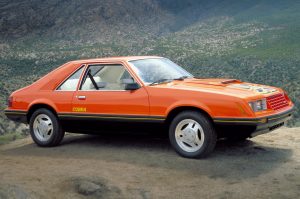
The Ford “Fox” body is a legendary example. It remained in continuous production – with minor tweaks – for more than 20 years. It served as the basis for the Mustang from the late 1970s all the way through the early 1990s. This accounts for the abundance of service replacement parts for Fox-bodied Mustangs – even to this day.
Yes, the car’s popularity is a factor. But the Fox platform wasn’t just used just to make M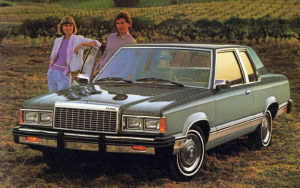 ustangs. It was used to make several other cars, too. And the Fox platform example isn’t – wasn’t – unusual. Car companies used to get a lot of mileage out of a given design. And because of this, so did you – the owner.
ustangs. It was used to make several other cars, too. And the Fox platform example isn’t – wasn’t – unusual. Car companies used to get a lot of mileage out of a given design. And because of this, so did you – the owner.
Because so many of that particular platform of car had been built – and were still in service – it made economic sense to keep on manufacturing service parts for a long time, even after the cars themselves were no longer being built.
And not just the platforms, either.
The engines, transmissions and peripherals also used to stick around for much longer. 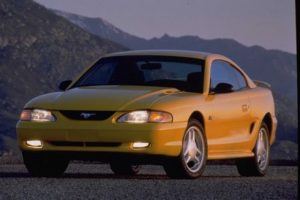
For example, Ford’s venerable – literally – 5.0 liter V8 engine (and the cross-town rival Chevy small block V8). It was in regular production for decades. The same basic engine that was available in a 1965 Mustang GT was also available in an early 1990s Mustang GT. One had a carburetor and wasn’t electronically controlled while the other was fuel injected and computer controlled – but they were nonetheless fraternal twins.
It is easy to get almost any service part for either of them.
Even today.
But new car designs – everything, from the bodywork (including things like headlight assemblies and trim) to the drivelines and all the incidental parts that go with – routinely get tossed and clean-sheeted after as little as four years now.
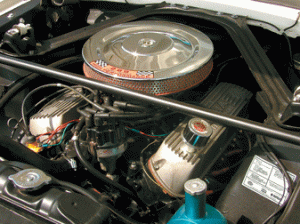
The car companies stop supporting these platforms soon thereafter. Instead of continuing to manufacture a car platform for decades – or at least, a decade – the molds and tooling get tossed as soon as the platform gets tossed. Maybe the tooling gets low-bidder off to a manufacturer in China, who resumes producing the parts. But usually, to a lesser quality standard, the result of looser production standards or lower quality (cheap) raw materials. Or, the parts are just knock-offs. Close to the look of the original part – and it fits, kinda sorta. But the tolerances are rough and the quality is often crap.
But it might be all that’s available.
Running changes within these shortened product life cycles make matters worse. A small – but functionally critical change to a car’s drivetrain immediately obsoletes the prior design. If that design was only in production for, say, six months – and only a few thousand of that particular design left the factory in a new car – there is little incentive to continue supporting that design for very long. Whatever spare parts happen to be in the bins are all there is. Once they run out, you are out of luck.

Depending on the part, this can obsolete the entire car – even though the car itself is otherwise mechanically sound and could go on providing reliable service for many years to come. Not many people will willingly drive around in a car with a non-operational air conditioner which can’t be economically repaired because a trivial – but functionally critical – component is no longer available and the only option is a used and likely failure-prone part or a failure prone cheap knock-off part.
Sometimes, you can “rig” a fix, but that’s generally not appealing, either. For example, there is a complex steel tube pipe with several fittings/nipples that carries hot coolant to the fuel injection system on a certain make/model import pick-up made from the late 1990s through the early 2000s. It is critical for the proper operation of the fuel injection system. The tubing tends to rust out. The manufacturer no longer makes the part. Your options are a likely half-rusted-out used part or rig something. Professional mechanics don’t like “rigging” things and generally, neither do their customers.
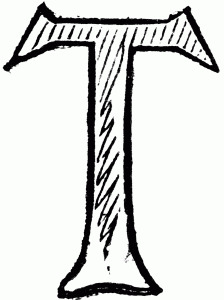
 These trucks long out-live that part. But without that part . . . and there are other such parts.
These trucks long out-live that part. But without that part . . . and there are other such parts.
It’s Kafkaesque – but that doesn’t mean it isn’t by design.
And even if it’s not, the result is the same: Your vehicle becomes that peculiarly modern thing – the perfectly sound throw-away.
Our Ford – for those who know the reference – is certainly smiling.
If you like what you’ve found here, please consider supporting EPautos. (Latest radio guest appearance can be heard here.)
We depend on you to keep the wheels turning!
Our donate button is here.
If you prefer not to use PayPal, our mailing address is:
EPautos
721 Hummingbird Lane SE
Copper Hill, VA 24079
PS: EPautos stickers are free to those who send in $20 or more to support the site. 


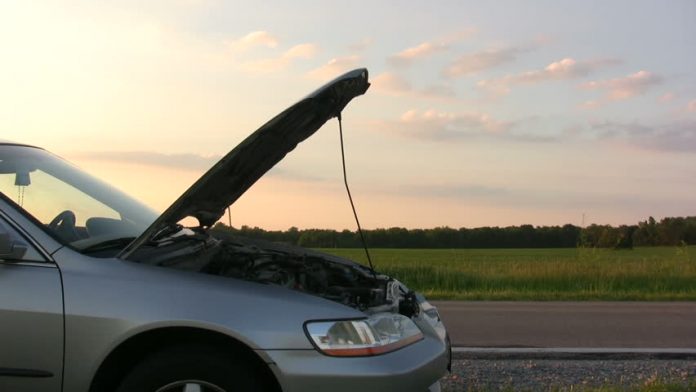







Guys, just relax. In Russia, a 20-year-old car .. is almost a new car!)
Hi Kojieco,
Do you have to buckle up for saaaaaaaaaaaaaaaaaaaaaaaaaaaaaaaaaaaaaaaaafety in Russia?
Every time I see a car (or motorcycle) ad that boasts that it’s all new I feel a chill breeze from soon to be out of production parts for the previous models. But it’s what the public wants–new and totally revamped. Vox emptor, vox dei.
Hi Ross,
When I began full-time writing about cars, back in the ’90s, a “new” car stayed that way for at least five years before a “mid-cycle refresh” and longer before it was totally redone. Now the “refresh” happens before three years are out and all-new by five.
Right-on, Ross!
Apparently, the “average consumer” is not familiar with the euphemisms.
“All new”= Forget about finding after-market or junkyard parts for a long, long time. You’re locked into OEM/Stealership part$ for the foreseeable future.
“All new” definition #2: You’re the guinea pig, as the new crap doesn’t yet have the bugs worked out, and we have no idea if it will be a gem or a turd; if it’ll last forever or develop problems before it hits 30K miles. No track record, no years of proven reliability. Buy it and keep your fingers crossed. If it’s a real turd and enough people have bought it, maybe they’ll be a class-action law-suit and you’ll get a free oil change or something to make up for years of trouble and the $30K you wasted.
“Latest state-of-the-art technology”= When the touchscreen burns out and you can no longer acess your heater controls… (Conveniently, just after the warranty expires) it’ll cost $2K to fix the problem, IF we still have a supply of the parts, and IF we still support the software- and remember, you’ll have to bring your old car into the $165/hr. stealership service department, because we’re the only ones who have the computers/software that can interact with your cars many computers, which now control EVERYTHING.
-“Your mileage may vary”…… 🙂
After I bought the used Lexus, I started repairing all the faults the previous owner left behind. Including a missing seatbelt bolt cover. They’re decorative, but I didn’t want to look at the only exposed bolt in the car… Turns out that small interior trim pieces in my interior color were no longer available. Lexus (or rather, their supplier) made a certain number of them many years ago, and the warehouse ran dry after 12 years.
The owners of Mercury and Buick cars actually have it worse – while Lexus is still in business, those marques are long gone and there’s zero chance of getting any trim pieces for them these days. Unless you get lucky at the pick-a-part yard. Your car will keep running, as the engines, transmissions, etc. are shared with other corporate cousins. But if you want to replace a shift knob or glovebox door? Sorry Charlie.
Automakers have been doing black paint to match for ages. I remember when even for popular to restore cars of the 60s all one could get with various interior parts was black PTM.
> The owners of Mercury and Buick cars actually have it worse
I’m thinking you meant Oldsmobile, or maybe Pontiac or Saturn. Buick is still (barely) around, mainly because they’re big in China.
Dad has owned a ’73 Cutlass since it was new. It’s almost as old as I am. A few years back, the brakes failed and he rear-ended somebody. Replacing the mechanical bits (mainly the entire brake system) was still easy, as GM A-body parts are probably at least as common (if not more) than Ford Fox-body parts. Replacing some of the smashed-up front-end bits was a bit more difficult, especially since some (like the bumper) were one-year-only parts. It took a year or two of calling around the country to various pick-a-part yards to round up all the needed parts, but with the parts installed and a new coat of the original color paint (sprayed by a dealer body shop with access to GM color information going back decades, vs. the merely close match Maaco applied in the ’80s), it’s probably in better-than-new condition now.
For some model years, you can get new reproduction parts from vendors such as Fusick’s. Their coverage of Oldsmobile parts starts to thin out after ’72, but they sell almost everything you’d need to turn (for instance) a ’70 Cutlass of the right body style into a fake 442 that would fool most people.
Good article as always, Eric.
Maybe I’m getting older, but non-automotive products out in the market are becoming less reliable by the year. Everything seems to be designed to fail and impossible to repair, instead of built to last. Even clothes! (I have some US and Mexico made shirts that are still in good shape from 20 years back, while modern day Chinese junk loses shape in a couple of washes) This is the hidden cost we pay for “low prices”.
Thanks, Escher!
My circa 2008 Mac laptop’s battery could be easily accessed and replaced by removing two large standard/blade screws on the back of the case. A panel popped off and there it was. Accessing a new Mac laptop’s battery requires disassembly of the entire case, which is held in place using about a dozen extremely tiny Torx-type screws of two different sizes. Then you have to perform surgery on the guts to get the battery out. It is a pretty complicated operation now and it seems deliberately contrived to make DIY service much harder…
I have to come out in defense of the auto makers, a bit. They are in the car making business not the parts selling business. They should be able to service cars through the warranty but after that there is zero expectation for them to keep parts. Sell the designs to the aftermarket and let them take over. For many of these cars I suspect there is virtually zero demand for the parts you can’t find.
Take some 20 year old car with a selling value of $2,000. If you need to put a $500 computer in it, you’ll probably look to get a different car.
They should be in the parts business. Example International, granted, it’s a truck company, but the parts division is way bigger then the new vehicle division.
Whenever I go to buy a part for the old chevy P20 we have in our family… or the countless volvos, I always do the sign of the T and hope I won’t have to rig something. Both those were made prior to the modern cycle and I’m usually OK. even the 292 chevy in the P20 was made from 62 to around 90. and even then it shares enough with the small block that parts are surprisingly available.
The old 911SC I have, while having some period specific parts, also have parts surprisingly interchangeable with many other years. they were made in that configuration from the mid 60s to the late 80s.
Today I tell my friends if they can’t avoid buying soemthing a bit more modern, to at least buy “world cars”.. cars that are sold in the same essential configuration all over the globe. The bigger number of sales will ensure parts will be available for a longer period of time… 3 series, vws, etc… as opposed to cars specifically made for the american market.
The cars you’re talking about, roughly 15-25 years old now are in essentially a dead zone. It’s a very mild dead zone really, other cars went through far worse in the pre-internet past. I went through this with both the Mavericks I’ve had in the early 1990s. There are actually _more_ available easier for Mavericks today than there was in 1994. In this dead zone the cars aren’t old enough for people to be restoring for the most part but too old for most people to keep. It’s just a bad age for a car, any car.
Furthermore between chinese parts, online junkyards, and junkyard part pullers selling on ebay even the difficult stuff can be got today.
I’ll tell you it’s monumentally easier keeping my ’00 Mazda and ’97 Ford going than it was my ’73 (and former ’75) Ford going when they were in this age range.
Then there are niche cars like El Camino’s you can and have been able to get parts for almost since they were made although there was a brief period when specific model parts(sheetmetal, grills, etc.)were hard to find.
Every time I think about restoring the ’77 I once again wish I could find a 74 Laguna front end that looked like a later Z 28. I look at 6.5 Turbo Diesel Elco’s, Duramax Elco’s and every type of big and small block gasoline Elco’s. I haven’t seen a crewcab yet but know somebody must be working on one. I was 30 miles from home one day and turned to get on I 20 when I did a double take when I saw a late 70’s Caddy with an Elco bed grafted on it. Now getting parts for that would be a challenge.
It’s not just cars, either- it’s tractors and machinery and equipment and even consumer products- and even older stuff.
Not that I’ve ever been one to buy factory OEM stuff…but the problem is: It used to be, that common serive parts were shared by many vehicles- both within a particular band’s line-up, and even across brands/makes. But at some point, things started becoming a lot more specific- even things like belts and hoses and filters, which years ago you might have an item that would fit 100 different makes/models/years of cars….today your car may take a belt that is specific to that one model of car and that alone- so it’s likely not even made aftermarket- and if it is, it’s gonna be hellishly expensive, and have to be ordered; and likely be the only choice, and will be discontinued early-on, since it only fits one make and model of car for maybe a year or two of it’s run.
Ditto all the non-serviceable “assemblies” and stuff. Forget about going down to the local auto parts monger and picking up a new wheel bearing like ya did when they used standard bearings which fit 500 different applications… Nope. Once the specific part for your vehicle becomes unpopular because your vehicle is older….those speific parts disappear.
And like I said, it’s not just cars.
Sanyo stopped making the battery for my c. 10 year old camera. It’s a perfectly good camera, but you need to replace the battery every few years, as they lose capacity. Now, all I can get are aftermarket ones…and they suck even when new- so I’m too the point where i essentially need a new camera, even though my old one is in perfect condition and not obsolete and does everything i need it to do.
I defintely agree that manufacturers of all kinds have been making products more and more needlessly complex and unrepairable. I remember not that long ago I could replace hard drives, RAM, etc with ease in pretty much any laptop. Now these things are soldered onto the logic board. Cell phone batteries are glued in place. Transmissions are “sealed for life.” Whether intentional or not, it keeps the consumer consuming and more often than not on a debt treadmill.
They’re gonna force us into living liker the Amish if this keeps up (And maybe that would be a good trhing!). I refuse to get on the debt treadmill- I buy new stuff for the long-haul; and it’s getting hard to find anything made to last, when even if it’s made well, if one tiny piece breaks and there’s no replacement, you’r4e SOL. And the good old stuff is now so old, it’s either “antique”, worn-out, or just not around to be had.
I think we’re getting to a critical point, where one will either be a slave to this technology [the very opposite of the technology was supposed to exist!] or will have to adopt a more basic lifestyle.
Not that I’m complaining, mind you….as the more basic aspects of my life are the best and most enjoyable. Maybe forcing more of that upon us will force us to choose: Debt servitude or freedom? Real life or virtual reality? You-control-it & privacy, or it-controls-you & the internet of things/gov’t and corps know your every move.
There could be a happy medium; it doesn’t have to be this way- but such is human nature and the authoritiarian collectivism it breeds.
Have to agree with James. Buying a car that has an enthusiast community certainly helps out a lot, and, you can end up with some really good after market stuff as well.
My 2005 Pontiac GTO now brakes and handles better than it did in 2005 due to the great aftermarket out there, and the fact there are people who know how to do the work and willing to provide instruction.
Hi mrfnuts,
Also helps that it has an LS V8… these are like the original small block V8 in that GM used the same basic engine in millions of cars over many years – which assures a long-lived supply of parts for these engines.
Agreed! That certainly helps as well. And…There obviously wouldn’t be an enthusiast community for the car if they equipped it with some gimpy 4 banger 🙂
Watching a YT last night, guy has 3 GTO’s(68’s it appeared)and one TA not shown. He rode in a new Z06 and couldn’t believe it.
Another guy orders 3 2018 Z06(didn’t know they still made that moniker)with 800 hp(didn’t know you could order HP either). I believe the price was $170,000 for that model. Out of my range for sure.
Ran into this problem back in 2013 with needing to repair a damaged 2005 Honda Accord. A freaking HONDA ACCORD! How many hundreds of thousands did they sell that year? It needed a replacement rear passenger door. It took ten days to find one! It would have been longer had the interior plastic panels been damaged, since the door was the wrong color (it was used) and needed to be repainted completely.
Used is the problem since insurance is paying. We waited for months with free rent cars for a rear hatch for a 2004 Blazer. It was insane and we were mightily pissed by the time it was in. One used one came in and not only I rejected it but the boy shop did also. They were supposed to be the premier place in town or I’d have found another shop. It’s finally ready and they call us to come get it. We drive up and the door trim on one corner is lying on the ground. We told them we’d be back the next day. It was back on again so we took it. That’s the newest vehicle we’ve had and now won’t accept one even that new. I’m holding out for an early 90’s GM pickup and they’re hard to find and getting expensive. I found one just like I had, ’93 Chevy Ext. cab, one ton 4WD Turbo Diesel manual shift long bed, just been posted on Craig’s List and I was too late.
3D printing might be the answer, at least for the metal and plastic:
http://www.popularmechanics.com/cars/a4354/4320759/
But much more troubling is finding replacement silicon. Not only does it get difficult to get a NOS computer, but there’s a pretty high probability the bad component might not be available anywhere at any price, especially with the early ECMs. Reverse engineering might be possible, but finding someone willing to take the time to do it will be difficult. I have test equipment that will eventually die because the power supply uses custom silicon that is not available. I got mine working by scavenging from another unit that had a different problem, but I know that it is only a matter of time until it won’t power up and can only be sent to the recycler. Because the main CPU looks at the subassembly CPU I can’t just wire in a different power supply.
There is hope: Open source ECU. http://www.diyefi.org Probably will never be street legal in the Land of The Free™ though.
Agree about the 3D printing and Silicon.
Back in the day when I used to work with capital equipment (in the silicon industry, ironically) the vendors would often have to pay top dollar to buy old CPUs, simply because the equipment was not forward compatible with the latest chips out in the market.
You guys buy factory parts?
Just had to replace a clutch master and slave on a jeep tj. Dodge no longer sells but it was $415, Rockauto.com has several for $100 and Auto Zone had for $170. Is it lower quality? Maybe. Todays manufacturing is top notch, there is no reason the parts are not good.
Hi Todd,
Some parts are ok, others aren’t. The problem is it’s often a roll of the dice. My mechanic friends – these are professional guys who run independent repair shops – frequently have issues with parts that are low quality, don’t fit quite correctly and so on.
But the real problem is when you can’t find a replacement part at all – and that is becoming more of an issue due to the reasons laid out in the article.
I have a 95 mustang that I keep at my sons house in NOVA, rear power window regulator is shot. Been looking all over the country for about 2 years. OEM, aftermarket, used, junkyard, it just doesn’t exist. Surprised me, since there must be a million of that generation Mustang out there, but no dice.
Hi VZ,
Yup. This is common.
Meanwhile, I can still get almost any functional part my ’76 Trans-Am might need. Part of the reason for this is parts commonality with other GM vehicles made during the ’70s – with overlapp into the ’60s and early ’80s. For example, almost every GM vehicle made from circa 1967 through the early ’80s with a V8 used a Quadrajet carb. While there are some differences here and there (e.g., jets, metering rods, small parts) many parts interchange. Same with GM’s HEI distributor; the coil/plug wires all basically the same. During most of the ’70s, most GM cars with automatics – this is across all GM divisions – used basically the same TH400/TH350 automatic. Etc.
Thus, even 40 years after the car was made, it is still possible to drive it every day – as far as being able to find service parts. I can still get oil filters over the counter for the 455 – an engine that hasn’t been made since 1975!
vzguy – CJ’s sells a new motor for it.
http://www.cjponyparts.com/power-window-motor-driver-side-1994-2004/p/PWM4L/
Here A1 has them, says works front or rear.
https://www.1aauto.com/1994-04-ford-mustang-window-regulator-front-pair/i/1awrk00230?f=480997&y=1994&utm_campaign=gb_csv_br&utm_content=WRK&gclid=CI67jp-tvdQCFVKewAodNlEHCg
Mustang convertible window regulators? I’ve seen SN95 ‘verts in junkyards and being parted out on craigslist.
Todd’s link confirms what I thought, same motor front and rear.
Just like with the old cars you have to do some snooping around to see what interchanges. For instance I needed a new cruise control module for ’97. The case corroded and cracked and the mechanism no longer functioned. With some research I found it was used for V6 mustangs and a bunch of other Fords. Went back to the junkyard and found one easily.
In the old days there were interchange guides to help this problem. Today you need to add up the information on various websites.
Hi Eric, wonderful website!
This is absolutely an issue which bears consideration when purchases any car. That said, one potentially mitigating action is to buy a car with a sizable enthusiast community. Fixes to common problems are usually worked out by a knowledgeable and passionate owner-base, sometimes more elegantly and cheaper than the official OEM fix (if one exists at all).
As an example, the BMW (Alpine) radio in my E46 had a broken volume knob. I was able to find an inexpensive 3D printed part instead of paying whatever the dealer wanted for a new radio, or searching for a used unit. I am not sure if someone would take the time to develop a fix for a boring, point-A to point-B car.
One thing that scares me are lower production cars that lack an enthusiast community. Boring appliances, much like modern white-box appliances are throwaway devices and are usually treated by their owners and manufacturers as such.
Thanks, James!
Thanks for the kind words – and welcome to EPautos!
Dear Newbies,
Besides internal combustion physics, this blog is about the NAP, the non-aggression principle:
Here are some historical formulations of the non-aggression principle –
Year.Author.Formulation
1689. John Locke. “Being all equal and independent, no one ought to harm another in his life, health, liberty, or possessions.
1816. Thomas Jefferson. Jefferson describes the NAP in a letter to Francis Gilmer: “Rightful liberty is unobstructed action according to our will within limits drawn around us by the equal rights of others.
I do not add ‘within the limits of the law’, because law is often but the tyrant’s will, and always so when it violates the rights of the individual.”
“No man has a natural right to commit aggression on the equal rights of another, and this is all from which the laws ought to restrain him.”
1851. Herbert Spencer. Spencer formulates the NAP as: “Every man is free to do that which he wills, provided he infringes not the equal freedom of any other man.”
1859. John Stuart Mill. In his book On Liberty – Mill states the NAP as follows: “the only purpose for which power can be rightfully exercised over any member of a civilized community, against his will, is to prevent harm to others”.
1923. Albert Jay Nock. In the second chapter of his book, Our Enemy, the State, Nock refers to an ancient formulation of the NAP by the legendary king Pausole, who stated it as two laws.
The first law was “hurt no man” and the second was “then do as you please”.
1961.Ayn Rand. In an essay called “Man’s Rights” in the book The Virtue of Selfishness she formulated “The precondition of a civilized society is the barring of physical force from social relationships.
In a civilized society, force may be used only in retaliation and only against those who initiate its use.”
1963.Murray Rothbard. “No one may threaten or commit violence (‘aggress’) against another man’s person or property.
Violence may be employed only against the man who commits such violence; that is, only defensively against the aggressive violence of another.
In short, no violence may be employed against a non-aggressor. Here is the fundamental rule from which can be deduced the entire corpus of libertarian theory.”
Cited from “War, Peace, and the State” (1963) which appeared in Egalitarianism as a Revolt Against Nature and Other Essays.
I’m confused, what is the point of your post, if not just a non sequitur? Besides, the NAP is never followed, especially by the psychopathic Machiavellian satanists at top levels of government. You know…the ones with access to THE RED BUTTON that sets off boom-boom missiles and deadly drones.
Cool citations, though. +1 if I could, here.
“Dear Newbies” ? Puleeeze. I actually think this blog is about whatever Eric wants it to be about.
Of course it is. I’m just a humble farmer, tending to my memes and shitpostings.
https://i.redditmedia.com/3_sX2mriW0HFiQfsPhCkSfeDlYv66snbDEeJd28v6oE.jpg?w=320&s=f93e377ae22ca283dd31e145c333e495
Maybe post more frequently and I’ll post less frequently. Eric needs your support. You are the wind beneath his wings. Mahalo.